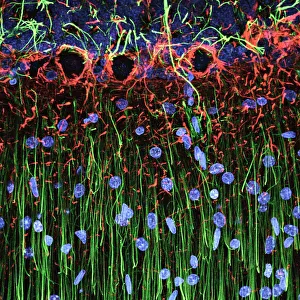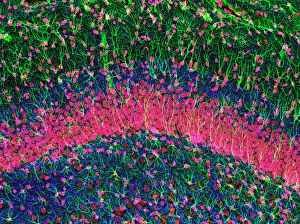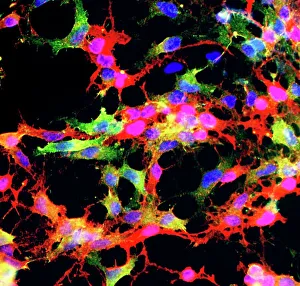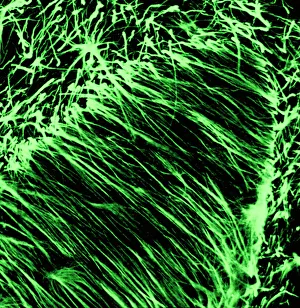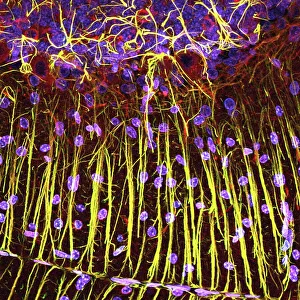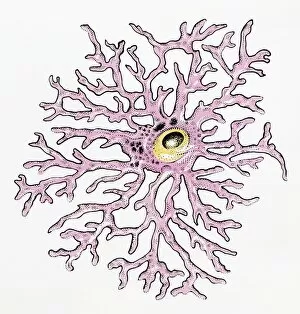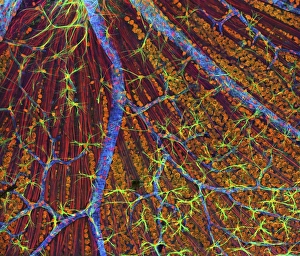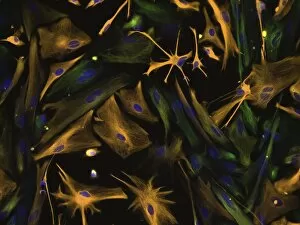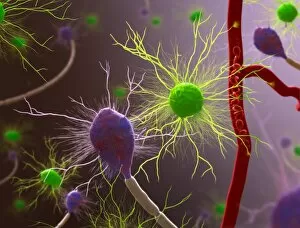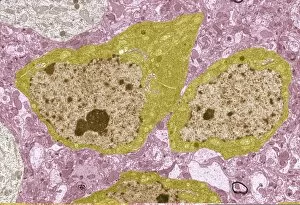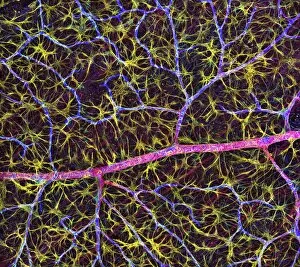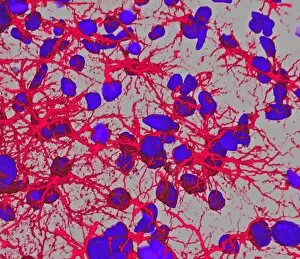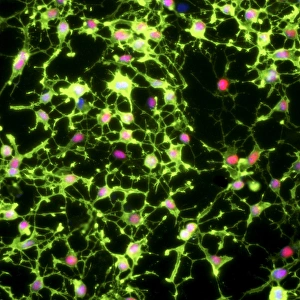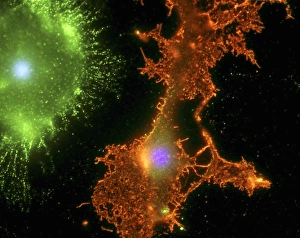Glia Collection
Glia: The Unsung Heroes of the Nervous System Delicate and intricate
All Professionally Made to Order for Quick Shipping
Glia: The Unsung Heroes of the Nervous System Delicate and intricate, the cerebellum tissue reveals a mesmerizing network of glial cells when observed under a light micrograph. In the hippocampus brain tissue, glia take center stage, supporting and nourishing neurons to ensure optimal brain function. A closer look at a light micrograph of glial stem cell culture unveils their remarkable ability to proliferate and differentiate into various specialized cells within the nervous system. Once again, the cerebellum tissue showcases its complexity as numerous glial cells are captured in another captivating light micrograph. Glia - often overshadowed by neurons - play an essential role in maintaining neuronal health and functionality, as depicted in this striking image of different types of glial cells. An illustration vividly portrays an oligodendrocyte glia cell or neuroglia responsible for forming myelin sheaths around nerve fibers, enabling efficient electrical signal transmission throughout the nervous system. Meet astrocytes – human glial cells that provide structural support to neurons while also regulating chemical balance within the brain; their importance cannot be overstated. Neurofibromatosis, a genetic disorder affecting the nervous system's development and function, highlights how crucial it is for our bodies to have properly functioning glial cells. Witnessing directed differentiation of multipotential human neural progenitor cells gives us hope for future treatments targeting specific neurological conditions with precision and efficacy. Through stunning artwork depicting various nervous system cells' intricacies (C017 / 3423), we gain insight into just how diverse and vital these cellular components truly are. Brain cell TEM C014 / 0358 offers a glimpse into one small part of our complex neural network where countless dedicated glial cells tirelessly work behind-the-scenes to maintain equilibrium. Glia - the unsung heroes of the nervous system.

